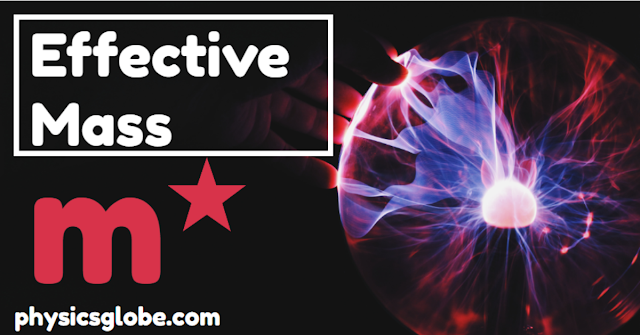Effective mass
An electron in a
crystal interacts with the lattice potential, hence its response to external
force is different from a free electron. Hence the deviation of electrons
behavior is taken into account by considering electrons to have effective mass .
.
It can be negative and
positive or infinite. It is given by
According to de-Broglie
theory, the velocity of an electron with wave vector K is the same as group velocity of
wave representing the electron i.e.
Where is the angular frequency and is related to the
electron energy E by the relation
is the angular frequency and is related to the
electron energy E by the relation .
In term of energy, the velocity is expressed as
.
In term of energy, the velocity is expressed as
Therefore by using eq. (2) in eq. (1), we get
Now
Hence to get
acceleration, differentiating this eq. w.r.t
From eq. (3) and (4), we get
Comparing this result
with classical result
 is given by
is given by In fig. is represented as a function of
is represented as a function of  is positive in the lower half and negative in the
upper half of the energy band and
is positive in the lower half and negative in the
upper half of the energy band and become infinite at the inflection point
become infinite at the inflection point .
This means that in the upper half the electron behaves as a positively charged
particle which is usually referred to as a hole. In most conductors
.
This means that in the upper half the electron behaves as a positively charged
particle which is usually referred to as a hole. In most conductors because the band is only partially filled. But
in semiconductors and insulators having almost filled valence bands, the
effective mass plays an important role in the conduction process.
because the band is only partially filled. But
in semiconductors and insulators having almost filled valence bands, the
effective mass plays an important role in the conduction process.


















1 Comments
u have explained each and every point...thankyou
ReplyDeleteIf you have any doubt, please let me know